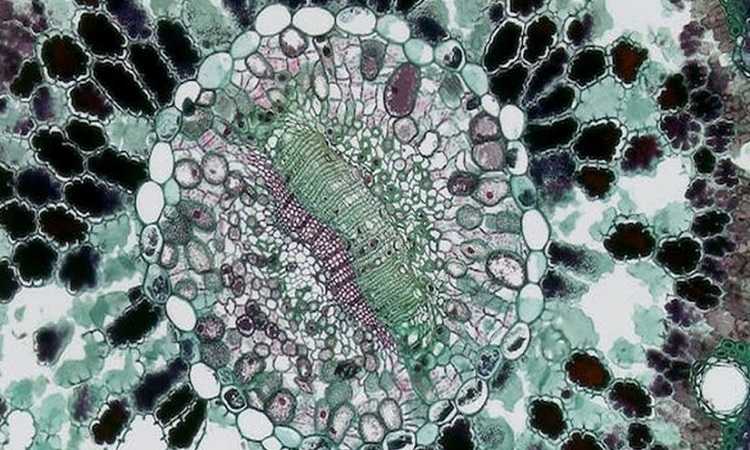
Washington: Researchers found Leaf arrangements in the earliest plants differ from those in most modern plants, casting doubt on a long-held theory about the origins of a well-known mathematical pattern found in nature.
The study was published in the journal, 'Science.'
According to the findings, the arrangement of leaves into distinctive spirals, which is common in nature today, was not common in the most ancient land plants that first populated the earth's surface.
Instead, the ancient plants were discovered to have a different type of spiral. This contradicts a long-held theory about the evolution of plant leaf spirals, which suggested that they evolved along two distinct evolutionary paths.
Spirals are common in nature, whether they are the vast swirls of a hurricane or the intricate spirals of the DNA double-helix, and most can be described by the famous mathematical series the Fibonacci sequence.
Named after the Italian mathematician, Leonardo Fibonacci, this sequence forms the basis of many of nature's most efficient and stunning patterns.
Spirals are common in plants, with Fibonacci spirals making up over 90 per cent of the spirals. Sunflower heads, pinecones, pineapples and succulent houseplants all include these distinctive spirals in their flower petals, leaves or seeds.
Why Fibonacci spirals, also known as nature's secret code, are so common in plants has perplexed scientists for centuries, but their evolutionary origin has been largely overlooked.
Based on their widespread distribution it has long been assumed that Fibonacci spirals were an ancient feature that evolved in the earliest land plants and became highly conserved in plants.
Also Read |
Satellites observe speed-up of glaciers on the Antarctic Peninsula: Study
However, an international team led by the University of Edinburgh has overthrown this theory with the discovery of non-Fibonacci spirals in a 407-million-year-old plant fossil.
Using digital reconstruction techniques the researchers produced the first 3D models of leafy shoots in the fossil clubmoss Asteroxylon mackiei - a member of the earliest group of leafy plants.
The exceptionally preserved fossil was found in the famous fossil site the Rhynie chert, a Scottish sedimentary deposit near the Aberdeenshire village of Rhynie.
The site contains evidence of some of the planet's earliest ecosystems - when land plants first evolved and gradually started to cover the earth's rocky surface making it habitable.
The findings revealed that leaves and reproductive structures in Asteroxylon mackiei, were most commonly arranged in non-Fibonacci spirals that are rare in plants today.
This transforms scientists understanding of Fibonacci spirals in land plants. It indicates that non-Fibonacci spirals were common in ancient clubmosses and that the evolution of leaf spirals diverged into two separate paths.
The leaves of ancient clubmosses had an entirely distinct evolutionary history from the other major groups of plants today such as ferns, conifers and flowering plants.
The team created the 3D model of Asteroxylon mackiei, which has been extinct for over 400 million years, by working with digital artist Matt Humpage, using digital rendering and 3D printing.
The research, published in the journal Science, was funded by UK Research and Innovation (UKRI), The Royal Society and the German Research Foundation.
Also Read |
Research reveals climate change will increase impact of volcanic eruptions
The study also involved researchers from, University College Cork, Ireland, University Munster, Germany and Northern Rogue Studios, UK.
Dr Sandy Hetherington, an evolutionary palaeobiologist and the project's lead at the University of Edinburgh, said:
"Our model of Asteroxylon mackiei lets us examine leaf arrangement in 3D for the first time. The technology to 3D print a 407-million-year-old plant fossils and hold it in your hand is really incredible.
"Our findings give a new perspective on the evolution of Fibonacci spirals in plants."
Holly-Anne Turner, who worked on the project as an undergraduate student at the University of Edinburgh and is the first author of the study, said:
"The clubmoss Asteroxylon mackiei is one of the earliest examples of a plant with leaves in the fossil record.
"Using these reconstructions we have been able to track individual spirals of leaves around the stems of these 407 million-year-old fossil plants. Our analysis of leaf arrangement in Asteroxylon shows that very early clubmosses developed non-Fibonacci spiral patterns." (ANI)







